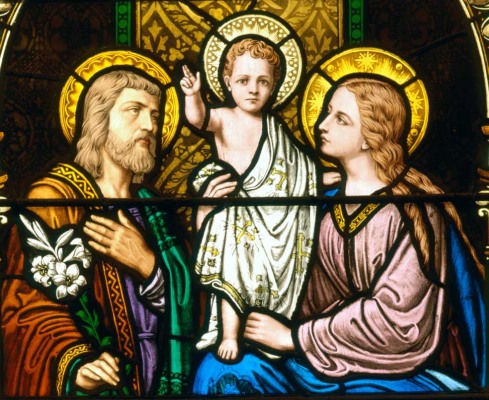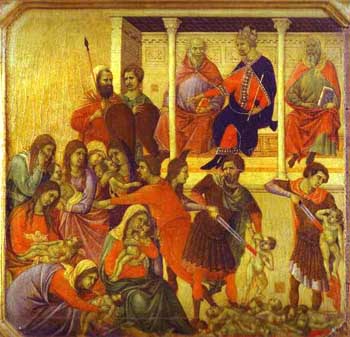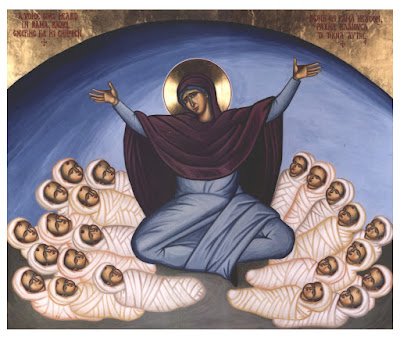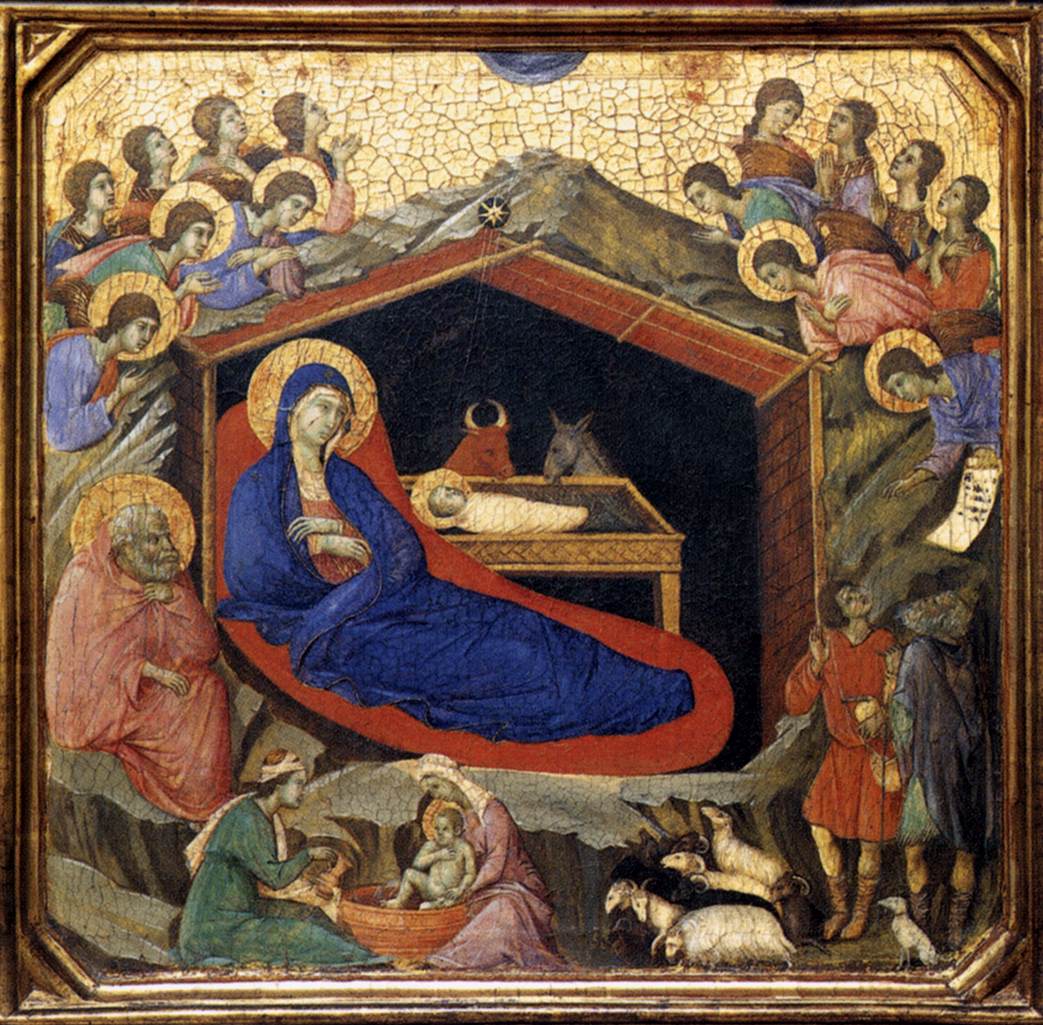 Really, I AM taking a break from blogging, but this homily is too good not to share!
Really, I AM taking a break from blogging, but this homily is too good not to share!
A Homily by Fr. Eric M. Andersen, Sacred Heart-St. Louis in Gervais, OR
December 30, 2012 Sunday in the Octave of Christmas: The Holy Family
A little over a week ago, our Holy Father Pope Benedict XVI gave his annual pre-Christmas address to the Roman Curia (Dec 21st, 2012). In his talk, he said that the family is in crisis not only because of a false understanding of freedom, but from a defective belief in what it means to be human. This is where we must begin. What does it mean to be human? This is probably one of the most important questions being debated today. He cites Gilles Bernheim, the Chief Rabbi of Paris, France who has raised awareness against a philosophical shift which has replaced the distinguishing word ‘sex’ to identify either male or female, with the word ‘gender’. There are consequences for this change of verbiage.
He begins by recalling a quote from Simone de Beauvoir who said: “ ‘one is not born a woman, one becomes so.’ We can easily be drawn to this quote because it is witty, it is romantic, and it shows a sense of confidence. But it betrays a shallow knowledge of what it means to be human. “These words lay the foundation for what is put forward today under the term ‘gender’ as a new philosophy of sexuality. According to this philosophy, sex is no longer a given element of nature, that man has to accept and personally make sense of: it is a social role that we choose for ourselves, while in the past it was chosen for us by society” (Benedict XVI). The Holy Father is referring here to a denial of the basic anthropology of man.
The Ecumenical Council of Vienne in the year of our Lord 1312 defined and decreed that the substance of the rational and intellectual soul is the form of the human body (cf. Denzinger, 902; Council of Vienne, Constitution Fidei catholicae). The soul is the form of the human body. Why was it necessary to define such a thing? Because in the previous century, a certain Franciscan by the name of Peter John Olieu, OFM, had proposed otherwise. So you see, there are no new ideas. There are no new heresies. Every heresy that arises in our day is just the revision of an old one. What was false then is false now. What is true is always true. The soul is the form of the human body.
Our Holy Father has cited a new philosophy of gender in which certain people believe that “sex is no longer a given element of nature, that man has to accept and personally make sense of” but rather they believe that “it is a social role that we choose for ourselves, while in the past it was chosen for us by society” (Benedict XVI). Our Holy Father comments:
“The profound falsehood of this theory and of the anthropological revolution contained within it is obvious. People dispute the idea that they have a nature, given by their bodily identity, that serves as a defining element of the human being. They deny their nature and decide that it is not something previously given to them, but that they make it for themselves” (Benedict XVI).
You see, the Holy Father is referring to the fact that our nature is decided for us by our physical bodies. If my physical body is male, then my nature is male. That means that my soul is male because, remember, the soul is the form of the body. My physical body determines my soul. There is no such thing as being a woman trapped in a man’s body. There is no such thing as a neuter soul. There is no such thing as an androgynous soul. My soul will be male after my body dies and my male soul will await the reunion of my male body at the General Resurrection and Last Judgment. This is because the soul and body are so intimately united that they cannot be separated. My soul will never belong to another body. The body I will receive at the Resurrection will be the same body I have now, albeit perfected and glorified. So, the nature of my soul is not up to me to decide. It is given to me by God. It is a fact. It is who I am physically and therefore who I am.
The Holy Father continues:
“According to the biblical creation account, being created by God as male and female pertains to the essence of the human creature. This duality is an essential aspect of what being human is all about, as ordained by God. This very duality as something previously given is what is now disputed. The words of the creation account: “male and female he created them” (Gen 1:27) no longer apply. No, what applies now is this: it was not God who created them male and female – hitherto society did this, now we decide for ourselves. Man and woman as created realities, as the nature of the human being, no longer exist. Man calls his nature into question. From now on he is merely spirit and will” (Benedict XVI).
This brings us back around to the family. A family is defined as husband and wife and children. A husband is a man and a wife is a woman united in the sacrament of Matrimony. Through the sacramental act between husband and wife God may grant children to that marriage and a family grows out of that. This is defined by God. It is not a social construct, nor can it be changed even if one rejects society or changes society. But this is a bigger issue than society. It is about God and it is about the identity of being human. Our Holy Father continues:
“Man and woman in their created state as complementary versions of what it means to be human are disputed. But if there is no pre-ordained duality of man and woman in creation, then neither is the family any longer a reality established by creation. Likewise, the child has lost the place he had occupied hitherto and the dignity pertaining to him. Bernheim shows that now, perforce, from being a subject of rights, the child has become an object to which people have a right and which they have a right to obtain” (Benedict XVI).
It is a subject of great sorrow when a husband and wife cannot conceive and bear children. But that also is decided by God and we cannot treat the child as an object which people have a right to obtain by any means.
Our Holy Father concludes on this topic:
"When the freedom to be creative becomes the freedom to create oneself, then necessarily the Maker himself is denied and ultimately man too is stripped of his dignity as a creature of God, as the image of God at the core of his being. The defence of the family is about man himself. And it becomes clear that when God is denied, human dignity also disappears. Whoever defends God is defending man" (Benedict XVI).
On this feast of the Holy Family, I wanted to share with you these words of Pope Benedict. It is important today as Catholics that we are literate. I want to encourage every person in this room to read something this year written by Pope Benedict XVI. Here he is writing on something important about family life. The family is defined and created by God for us. At Christmas we can look at the beauty of the Holy Family: Joseph and Mary and the Holy Child Jesus. They are an example to us of what family life looks like.
As Catholics we are called to defend authentic family life. We must understand authentic family life in order to defend it. Our Holy Father’s address to the Roman Curia helps us to understand some of the issues being disputed today. During this Year of Faith, let us resolve to become literate Catholics and grow in our faith. We need to be reading our Bibles and reading the Catechism of the Catholic Church. Let us do so as families for ages upon ages have done. St. Joseph certainly read to his family from the Holy Scriptures and from the teachings of the Rabbis. Fathers today are called to imitate St. Joseph as the spiritual heads of their families. Fathers: read to your families at the dinner table. Read to them out loud each night a chapter from the Holy Scriptures and a section from the Catechism. By doing so, you will set a good example for your children and you will show your love for God and your love to your family as a provider of God’s loving words, a protector of their souls, and a teacher of divine wisdom for a blessed life.




























